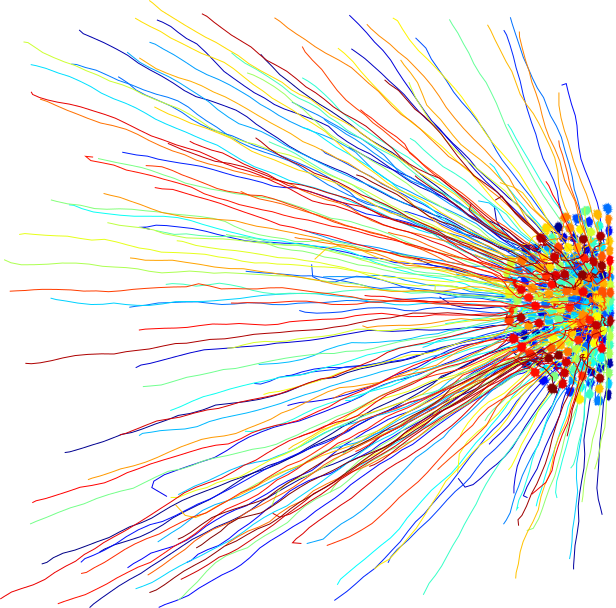During mass events such as pilgrimages, concerts, and protests, crowd density often becomes exceptionally high. As a consequence, these events can end with tragic injuries and death due to the emergence of collective motions such as crowd turbulence and density waves. While the study of human behavior gathers the efforts of disciplines as diverse as physics, neurosciences, psychology, and sociology, the underlying mechanisms for crowd disasters remain poorly understood, and the frequency of mass incidents calls for immediate research in this area.
The goal of my research is to develop a unifying framework to understand, predict, and prevent the emergence of collective motion in high-density crowds.
On the theoretical standpoint, I am blending techniques from theoretical and condensed matter physics, complex networks theory, and information dynamics, to develop a new general methodology for the quantitative analysis of high-density collective motion.
On the experimental side, in summer 2017 I filmed the crowds gathering at outdoor concerts for the 2017 Stockholm Kulturfestival, in collaboration with the event management ad crowd safety department of the City of Stockholm.
Currently, I am applying the developed methodology to mathematical models and footages of crowds to gain (i) a fundamental understanding of the mechanisms for potentially lethal collective motion, (ii) the groundbreaking ability to predict such events, and (iii) insights in the coupling between information propagation and collective motion at high-density.
In the future, I aim to implement these methods into practical real-time analytics for the prevention of crowd disasters. Further applications of this new methodology for the quantitative analysis of high-density collective motion may also include the characterisation of motion and signalling in tissues and cancer cells.
